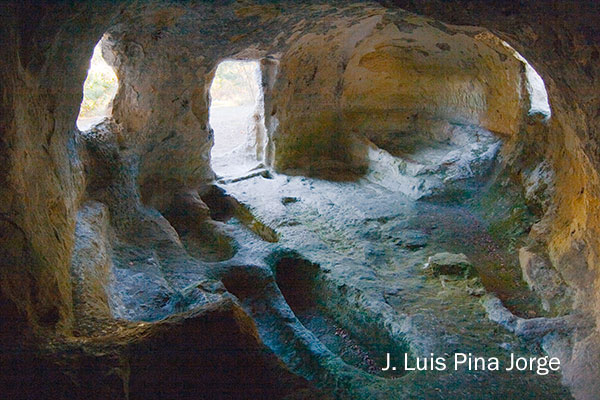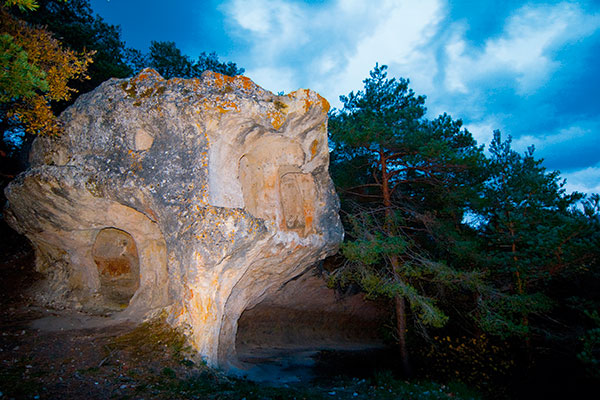There is evidence to show that during the first centuries of the Middle Ages, around the IV, a strong current of asceticism existed in the Iberian Peninsula. This was backed by the Priscillien movement, though condemned by both the Church and the Spanish-Roman civil authorities.

In general terms, those who pursued this way of life opposed the pomp and ostentation of the official Church at that time .
These hermits sought Christian perfection through withdrawing from society and living in solitude in places that were out of the way and often very difficult to enter .
Such ascetics would live in dwellings that they themselves dug out of the rock, which came to be known as “man-made caves” and frequently became places of worship.
The hermit way of life spread widely throughout the north of the peninsula. In Valdegovía itself, there are sixteen of their caves in the villages of Bachicabo, Barrio, Villanueva de Valdegovía, Quejo, Pinedo, Corro and Tobillas, there being others not able to be documented as well as seven discovered in the district of Valpuesta, which belongs to the province of Burgos.
The BEST KNOWN are those at Pinedo, Corro and Tobillas.
Within this particular framework of hermitism, three SPECIFIC FUNCTIONS have been identified for these caves:
This type of cave can be split into TWO STAGES OF DEVELOPMENT, chronologically speaking:

The first stage goes back to the VII century. Although the caves’ origin cannot be established, C-14 carbon dating on samples from the burial sites at Corro have been used, together with the dates that Santa Maria de Valpuesta and San Román de Tobillas were established, these referring to the existence of previous places of worship of rock cave type.
The second stage is associated with the graves inside the caves, which can be dated from around the IX onwards. The caves may, around that time, have started to lose their character as dwelling places for hermits in the strictest sense and become hermitages.
As previously mentioned, in the case of Corro and Pineda the role of hermitage continued up to the start of the XIX century.
